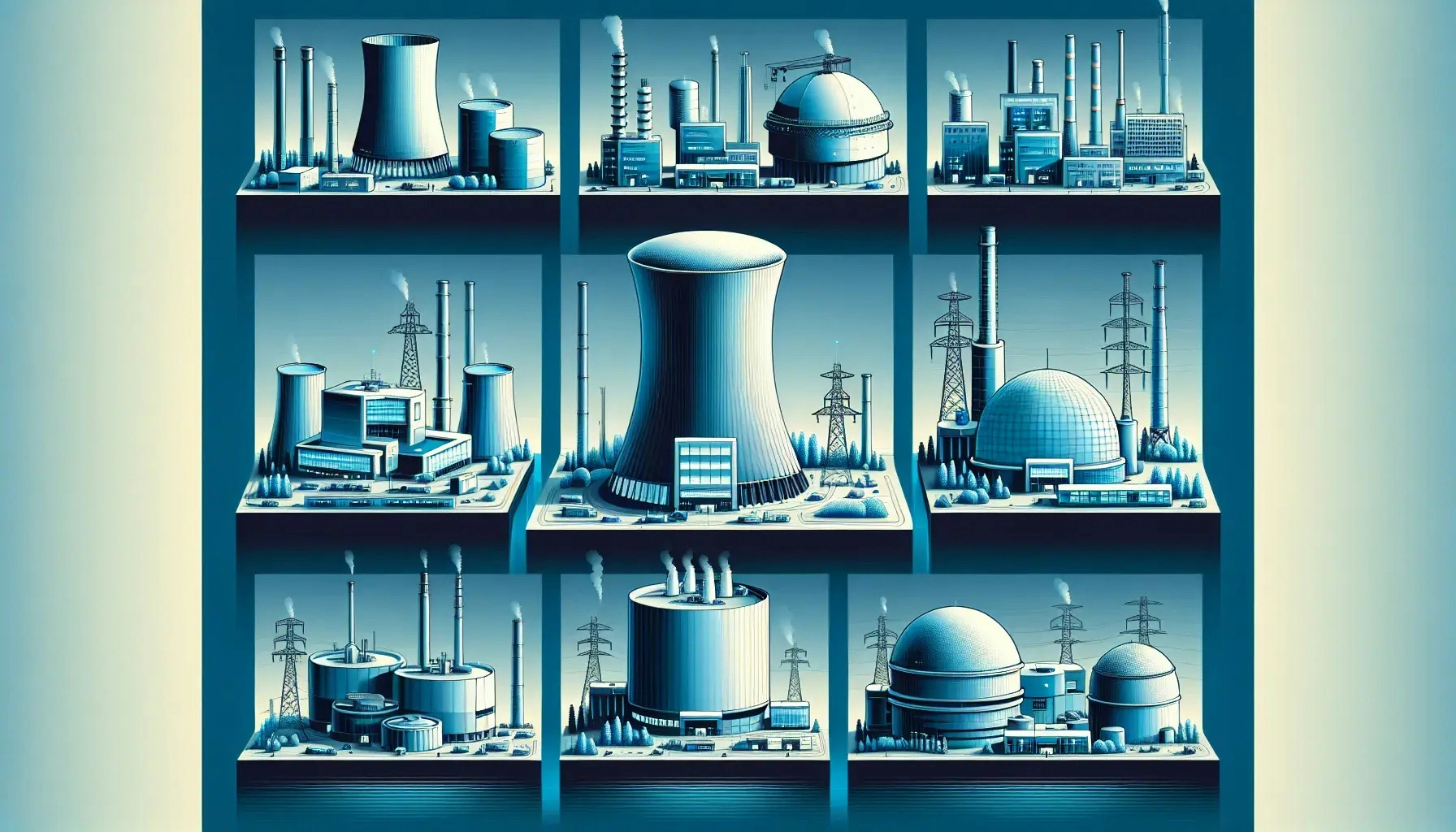Welcome to our deep dive into the world of nuclear reactors. This blog post aims to shed light on the different types of nuclear reactors, their workings, and their unique characteristics. We'll explore the science behind these powerhouses and the role they play in our world. So, let's embark on this journey of understanding nuclear reactor types.
The Basics of Nuclear Reactors
Nuclear reactors are complex machines that generate power through nuclear reactions. The heart of a nuclear reactor is its core, where the nuclear fuel resides. This fuel, usually uranium or plutonium, undergoes a process called nuclear fission, releasing a tremendous amount of energy in the form of heat. This heat then converts water into steam, which drives a turbine to generate electricity.
There are several types of nuclear reactors, each with its unique design and operation. The most common types include pressurized water reactors (PWRs), boiling water reactors (BWRs), heavy water reactors (HWRs), and fast neutron reactors (FNRs). Each type has its advantages and disadvantages, which we'll delve into in the following sections.
Pressurized Water Reactors (PWRs)
Pressurized Water Reactors are the most common type of nuclear reactor, making up over 60% of the world's nuclear reactors. PWRs use light water (ordinary water) as both a coolant and a neutron moderator. The water in the reactor core is kept under high pressure to prevent it from boiling, hence the name "Pressurized" Water Reactor.
In a PWR, the nuclear fuel heats the water in the reactor core. This hot water then travels through pipes to a steam generator, where it transfers its heat to a secondary loop of water. This secondary water turns into steam, which drives a turbine to generate electricity. The primary water, now cooled, returns to the reactor core to repeat the process.
PWRs are favored for their safety features. The design includes multiple barriers to prevent the release of radiation, making them a safe choice for power generation. However, they are not without their drawbacks. The high pressure required in the reactor core can lead to mechanical stress, and the complex design can make maintenance challenging.
Boiling Water Reactors (BWRs)
Boiling Water Reactors are another common type of nuclear reactor. Unlike PWRs, BWRs allow the water in the reactor core to boil, creating steam directly in the reactor vessel. This steam then drives a turbine to generate electricity.
BWRs are simpler in design than PWRs, as they eliminate the need for a separate steam generator. This simplicity can lead to lower construction and maintenance costs. However, the direct contact between the nuclear fuel and the steam turbine can potentially lead to higher levels of radiation in the turbine system.
Despite this, BWRs have robust safety systems in place. They employ negative feedback mechanisms that automatically slow down the nuclear reaction if the reactor gets too hot, enhancing their safety profile.
Heavy Water Reactors (HWRs)
Heavy Water Reactors use heavy water, or deuterium oxide, as a coolant and neutron moderator. The unique properties of heavy water allow HWRs to use natural uranium as fuel, which is less processed and therefore cheaper than the enriched uranium used in PWRs and BWRs.
HWRs are known for their efficiency and flexibility. They can be refueled while operating, reducing downtime and increasing power output. Additionally, they can be used to produce plutonium for nuclear weapons, making them a dual-purpose technology.
However, the use of heavy water increases the cost and complexity of these reactors. The production of heavy water is expensive, and the reactors require robust containment structures to prevent the release of tritium, a radioactive byproduct of the nuclear reaction.
Fast Neutron Reactors (FNRs)
Fast Neutron Reactors are a type of advanced nuclear reactor that operates at higher neutron energies than traditional reactors. They do not use a neutron moderator, allowing the neutrons to move at high speeds, hence the name "Fast" Neutron Reactor.
FNRs are highly efficient and can extract more energy from nuclear fuel than traditional reactors. They can also use a wider range of fuels, including plutonium and minor actinides, reducing the amount of nuclear waste.
However, FNRs are complex and expensive to build and operate. They require advanced materials and technologies to withstand the high neutron energies and temperatures. Despite these challenges, FNRs hold promise for the future of nuclear power due to their potential for sustainability and waste reduction.
The Future of Nuclear Reactors
As we look to the future, the development of new types of nuclear reactors continues. These include Generation IV reactors, which aim to improve safety, efficiency, and sustainability, and Small Modular Reactors (SMRs), which offer flexibility and scalability.
The future of nuclear power also involves addressing the challenges of nuclear waste management and public perception. Continued research and development, along with open dialogue and transparency, are key to ensuring the safe and sustainable use of nuclear power.
Wrapping Up: Understanding the Different Types of Nuclear Reactors
We've journeyed through the world of nuclear reactors, exploring their workings and their unique characteristics. From the common PWRs and BWRs to the advanced FNRs, each type of reactor has its role to play in our energy landscape. As we look to the future, the continued development of new reactor designs promises to enhance the safety, efficiency, and sustainability of nuclear power.

